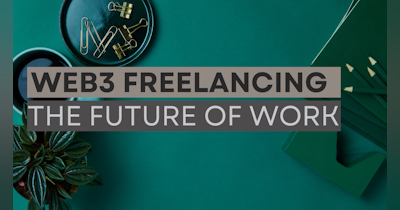Your skills may be more require more than ever.
Despite how crowded the freelance world appears to be, there are still many customers across different industries that are looking to hire top talent.
The pandemic showcased to business owners that freelancers will still remain in high demand.
Do you know what that means?
This is your perfect opportunity to collaborate with clients that are looking to outsource their tasks. Instead of going through a trial-error situation with your prospects, learn how to ‘’scan’’ the bad apples from good ones. This will save your time and energy, and focus on things that matter in your business: growth and productivity, all hassle-free.
What are red flags in freelancing?
Red flags in freelancing are those warnings after a discussion with a prospect that your future collaboration will not end great. This will lead to a toxic business relationship, where neither of the party will grow or feel comfortable working with.
The importance of spotting red flags
Not all clients are made for you, and that’s OK. The sooner you learn that, the better. It is important for you to grow the muscle of spotting red flags because you want to work with clients that appreciate your time and expertise. This is the only way you will grow your freelance business into a profitable one. By working with the right clients, they will refer you to others, who are exactly like them.
Here are a few ways how to spot bad clients:
1. Clients who are quick to ask freelancers to work outside the freelancing platform
If you work on Fiverr or Upwork, do not take the work off-platform at your client’s request. If your prospect is suggesting it in order for you to ‘’save money’’ that you will pay as a user fee, do not take upon their officer. This goes against the Terms of Service of any third-party freelance website and you risk being banned. By taking the payments on freelance platforms, you are benefiting from an escrow service and dispute resolution, in case something goes wrong.
2. Clients who received less than ideal reviews
Happily, on freelance platforms, you can check the reviews for a prospect and take any further decisions based on that. I recommend you trust what you see written there. If you are working with a startup, you can always check Glassdoor and see what people say about them.
3. Clients who want you to go through an ‘’unpaid work trial’’ and if you ‘’pass’’ it, they will hire you
Some clients are just looking for low-cost work and please understand that this has nothing to do with you not having great skills that people would pay money for. This does not come from a place where the client has monetary issues, because I have seen this coming from big players as well. It is all about poor ethics and bad practices.
Never take an unpaid project on a promise of a future collaboration. The service you are offering has value, and you should be the first one to appreciate it before anyone else does.
4. Lack of clarity
If your client is lacking clarity and does not underline the project scopes, or if he is not vocal about what they want, how can you design it? The lack of purpose and communication will make the project more difficult and it is best you move to the next client.
5. Not understanding the difference between an employee and a freelancer
If after your discovery call you get hints that your client did not understand the difference between an employee and a freelancer, this is a big red flag. What you might fall into is being micromanaged and being treated as an employee: he will design your working schedule and when to attend meetings without confirming it with you first.
If you wanted to be micromanaged, you would have stayed in the corporate world, right?
And here’s a sweet reminder: freelancers are self-employed, they set their own working hours, they keep track of the time spent on different projects, and they will bill clients and pay their own business taxes.
6. Bad payment terms
Run away from clients that have bad terms in place. For example, they say ‘’we will pay you 60 days after the project is completed’’. This is a warning that they do not trust your work, your value or they will expect unlimited changes during that 60-days window. Working with such clients will not be hassle-free. Give a maximum of 30 days for an invoice to be paid.
7. Unrealistic demands
Sometimes, it takes a few minutes to understand if your prospect’s demands are realistic or according to the budget. You can’t design a Tesla with a budget of a bicycle!
If your client is acting like they know the price of your service based on the fact that they talked to other freelancers and they got a lower price; stay away.
8. Clients that do not want to sign a contract
Terms and Conditions represent a significant piece of paper for your freelance business. In case if anything goes wrong, this will have your back, legally speaking. Always write down what service are you offering, what is the client getting, how much it costs, when to pay, where to pay and what is the deposit/ full payment due date. Even an email of approval for you to start work is considered a legal agreement.
When a prospect does not want to sign a contract or NDA (Non-Disclosure Agreement), it’s due to the fact that they do not want to be held accountable.
In freelancing, accountability goes both ways.
Do not get me wrong, through all that clutter; there are good clients as well. You will find the right ones to build a partnership that can last for years. And the same clients will recommend your services to others.
What did I miss? How are you filtering red flag clients? Let me know in the comments.
To receive additional resources, you can subscribe to Jump In Podcast newsletter. I publish freelance tips and tricks every Monday.



















